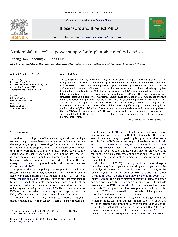摘要
This study seeks a new way to provide lasting and secure power for implantable medical devices (IMDs) using a microbial fuel cell (MFC) which was proposed to be placed in human large intestine and could utilize intestinal contents and microorganisms to generate electricity. Based on the anatomic structure and inner environmental conditions of large intestine, transverse colon was chosen to be the appropriate location for the implantation of MFC. The performance of the MFC which simulated the environmental features of transverse colon by controlling dissolved oxygen (DO) and pH and was inoculated with simulated intestinal fluid (SIF) was investigated. Stable power generation of MFC was obtained after two months operation with open circuit voltage (OCV) of 552.2 mV, maximum power density of 73.3 mW/m(2), and average voltage output of 308 mV (with external resistance of 500 Omega). Moreover, the changes of environmental conditions in the chambers of MFC did not have a significant impact on human body based on the analysis of pH and DO values. Further studies on internal resistance and power density showed that the MFC could generate power of 7-10 mW according to the size of intestinal surface area, which was enough for IMDs. These results suggested that MFCs located in large intestine could be a promising power source for IMDs.
- 出版日期2010-5-15
- 单位北京航空航天大学
